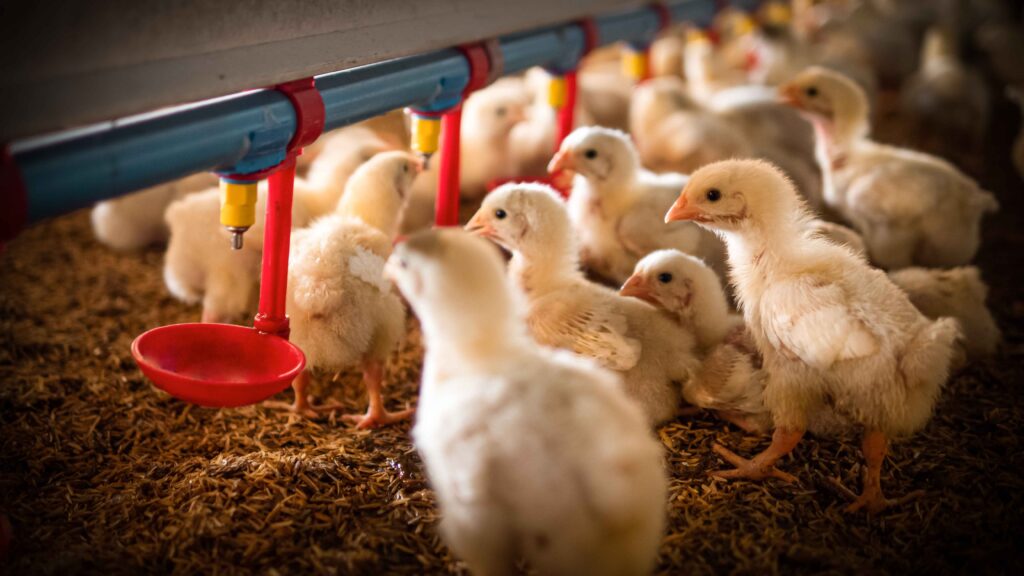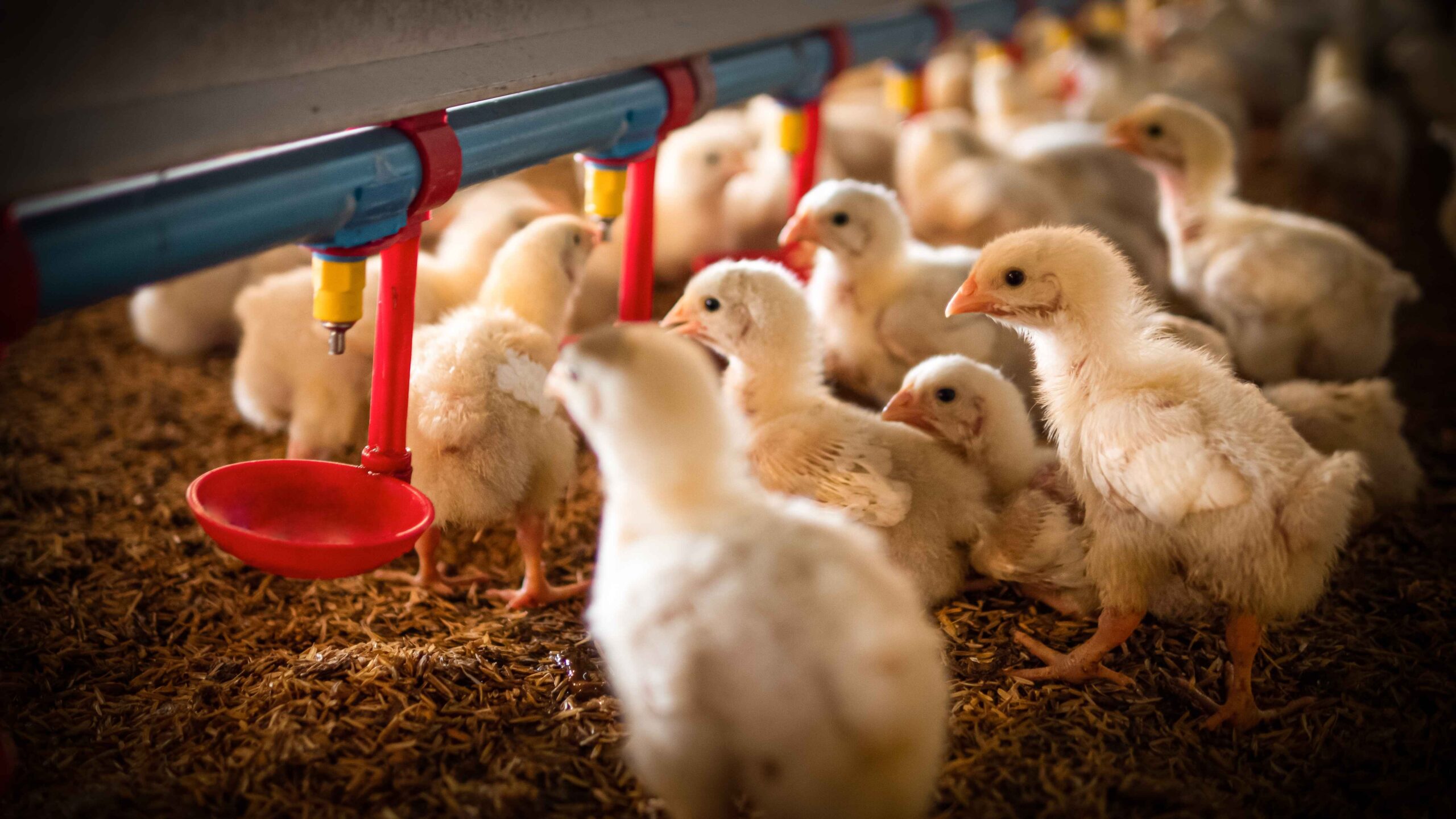
Soybean meal is the primary protein source in most animal feed formulations today. In fact, it makes up about a third of most U.S. poultry rations—supplying a unique combination of amino acids and other nutrients that broiler chickens depend on. Unfortunately, soy meal also contains several harmful anti-nutritional factors, like trypsin inhibitors, that compromise its health benefits. To provide valuable proteins that animals can digest, soy processors must understand how to deactivate soybean trypsin inhibitor to make the most of their meal.
What is a soybean trypsin inhibitor?
Certain plants, including soybeans and other legumes, produce an enzyme called trypsin inhibitor (TI) as a defense mechanism to prevent pests from consuming them. As the name implies, a TI blocks the activity of trypsin, a digestive enzyme that monogastric (single-stomached) animals depend on to break down proteins.
By blocking this digestive enzyme, trypsin inhibitors interfere with an animal’s ability to digest and absorb dietary proteins. This can cause decreased weight gain, particularly in monogastric animals like poultry and swine. When the ultimate goal of poultry production is for chickens to gain weight from the feed they consume, TI can seriously impede a farm’s profitability.
Over time, excessive TI consumption can even damage the chickens’ intestinal health—contributing to metabolic and digestive diseases and even pancreatic hypertrophy or enlarged pancreas growth. This can be detrimental to animal production, performance, and overall health.
As poultry production standards have improved regarding average feed intake and body weight, modern chickens consume over three times more TI in 2001 than in 1957. In other words, because bigger birds are eating more soy meal today, they’re also consuming more TI—which isn’t good for their health or the economic health of the farmers feeding them. For example, in starter feed formulations with more than 30% soybean meal, TI concentrations can exceed 2 milligrams per gram—enough to compromise growth.
Producing the best meal for healthy livestock feed and growth performance requires that processors properly deactivate soybean trypsin inhibitor.
How to deactivate trypsin inhibitor
On average, raw soybeans contain 30,000 to 50,000 TI units per gram. Safe levels for animal feed traditionally range from 10,000 to 15,000 TI units per gram, although some feed mills demand even lower levels to satisfy their customers.
Thermal treatment, or heat, is the most common method for deactivating soybean trypsin inhibitor. In the early 20th century, researchers realized that protein digestibility was lower in raw legumes than in their cooked counterparts. Since then, heat processing has been widely accepted as the most effective way to deactivate TIs.
But just how much heat does it take to deactivate TIs? Heat treatment requires a delicate balance of time and temperature. Applying too much heat—for instance, over-roasting the soybeans before pressing—can degrade the protein quality of the meal, reduce the digestibility of amino acids, and make the oil more susceptible to oxidation. Soybean processing requires enough heat to destroy the trypsin inhibitors, but not so much heat that it alters the functional properties of the products.
For example, one of the oldest studies about using heat to deactivate soybean trypsin inhibitor suggested that TIs were completely inactivated at temperatures of 108 degrees Celsius after 15 to 30 minutes. However, recent studies from the last 20 years demonstrate that temperatures above 80 degrees Celsius can damage important nutrients, vitamins, and amino acids.
TI levels can vary depending on soybean genetics, moisture content, processing steps, and equipment used. Ultimately, the perfect balance of heat comes from a combination of different processing steps.
- Heat from the expeller press: During processing, screw presses like the Anderson Oil Expeller® generate frictional heat while physically crushing soybeans to separate the oil from the meal. Many processors mistakenly assume that the expeller press alone generates enough heat to lower TI levels, but that’s not necessarily the case.
- Heat from extrusion: Upstream of the expeller press, an extrusion system like the Anderson Dox™ Extruder efficiently cooks, dries, and shears the soybean material to prepare it for optimal pressing. The Dox cooks seeds quickly—with a short residence time of about 20 to 30 seconds, compared to 20 or 30 minutes in a traditional cooker—to preserve the quality of the proteins while effectively deactivating anti-nutritional factors. Some studies suggest that dry extrusion systems can inactivate up to 95% of soybean trypsin inhibitor.
- Heat from seed dryers: Even further upstream before the extruder, the type of seed dryers used to lower the moisture content of soybeans can further impact the final TI level.
Lower TI levels, guaranteed
Striking the perfect balance of heat treatment to effectively lower soybean trypsin inhibitor levels depends on many factors—including, most importantly, the processing equipment used.
Many expeller-extruder systems struggle to achieve TI levels under 10,000 units per gram by relying on mechanical heat alone to deactivate harmful enzymes. However, Anderson International can now guarantee TI levels under 8,000 units per gram using our Dox high-shear extrusion system—helping processors produce the highest-value mechanically-extracted soy meal on the market.
Additionally, Anderson’s chemical-free extrusion system uses less than 50 kilowatt-hours per ton of energy to operate, significantly less than other equipment. This lowers the overall cost of ownership, giving processors even better results at lower prices.
By partnering with processors to optimize every aspect of a soy meal operation, Anderson offers an efficient expeller-pressed, extrusion-based processing system guaranteed to minimize soybean trypsin inhibitor levels while maximizing profit margins.
Ready to combat TI levels at your soybean processing plant?
